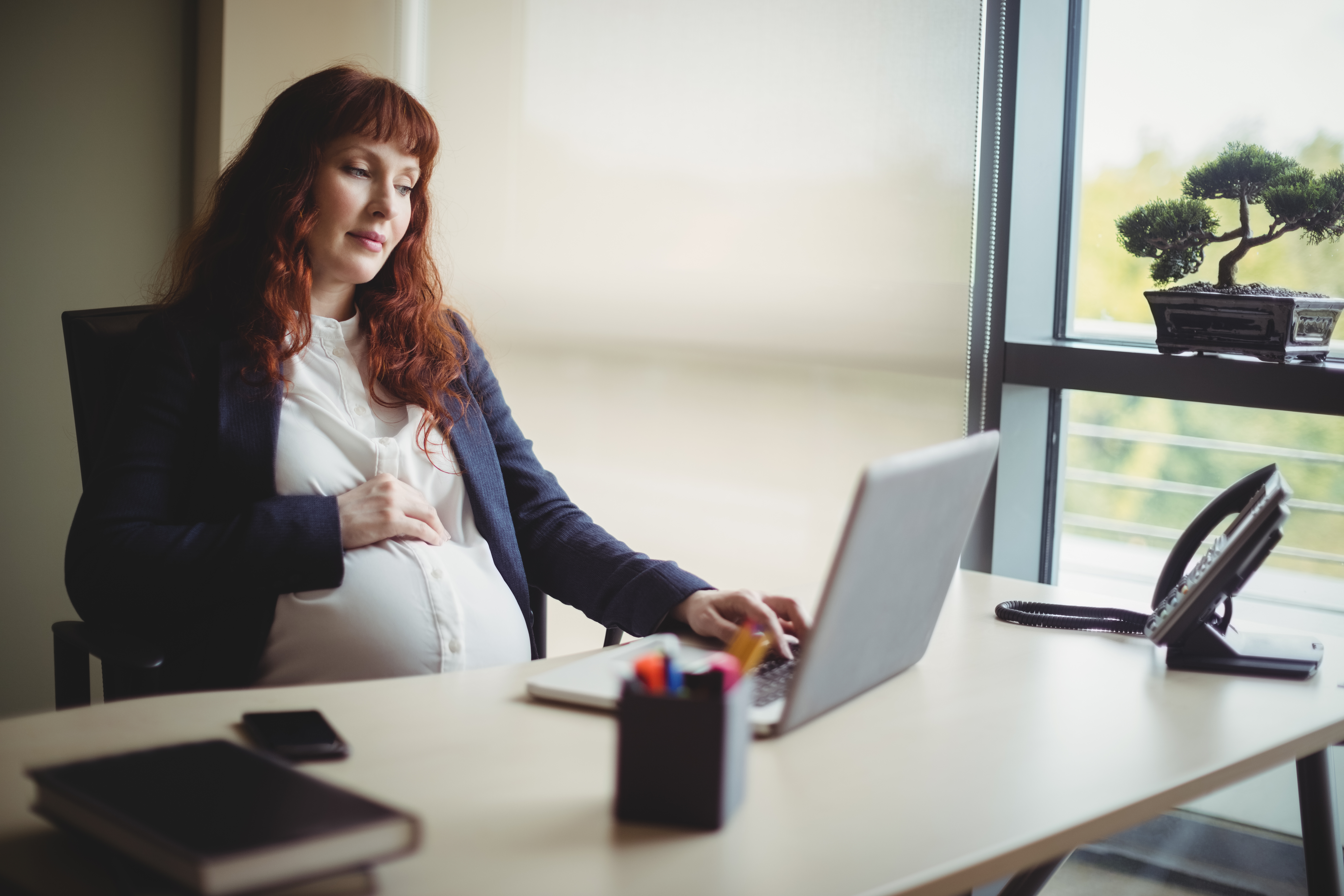✨ Health insurance, now in PayFit - learn more
💷 All the rates & thresholds you need to know for 25/26...right here
✨ The Payroll Journey: Start, Scale & Succeed Globally - learn more
✨ Health insurance, now in PayFit - learn more
💷 All the rates & thresholds you need to know for 25/26...right here
✨ The Payroll Journey: Start, Scale & Succeed Globally - learn more

UK sick leave entitlement is a complex but essential responsibility for UK employers, requiring a specific policy that is firm, fair, and compassionate. Every employer has a duty of care for personnel who are unwell, whether they are dealing with a short-term physical or mental illness, or recovering from a more serious health issue. This guide outlines the key legal and practical points of sick leave entitlement in the UK for growing businesses.
Staff take sick leave when they can’t attend work because of an illness or injury. This includes physical conditions like muscle soreness or flu, as well as mental health issues such as depression or acute anxiety. Equally, a worker might request time off to deal with a more critical health issue, such as recovering from cancer treatment or a life-saving surgery.
A worker must be paid for the sick days that they take, either as Statutory Sick Pay (SSP), which is the legal minimum sick leave entitlement, or at your organisation’s own Occupational Sick Pay (OSP) rate.

There are many reasons why a worker might use their sick leave entitlement. Here in the UK, the most common are:
Minor ailments: The common cold, flu, stomach aches and migraines fall into this camp. Though these conditions may be mild and only result in a brief spell off, they can still be disruptive for teams and businesses.
Mental health disorders: These constitute an increasingly recognised and costly issue for both personnel and businesses. A recent survey by Spill revealed that workers take an average of 18 days off per year to deal with stress, anxiety, and depression.
Musculoskeletal injuries: These can include everything from back pain to pulled muscles. Those working in manual labour are especially prone, and recovery can be tricky and complex for businesses.
Medical appointments: Sometimes, workers have to attend appointments with doctors or other practitioners, and they will often take a sick day off for this, rather than using up their annual holiday allowance.
There are a few legal obligations an employer needs to be mindful of. Statutory regulations are outlined in the Statutory Sick Pay Regulations of 1982, and the Statutory Sick Pay (Medical Evidence) Regulations of 1985. In addition, other ‘sick pay right’ and ‘return to work’ regulations must be observed.
Statutory Sick Pay (SSP) is the mandatory minimum payment that an employer must pay directly to their eligible employees, and is not their full wage. Here’s a breakdown of how it is applied:
Rate and duration: From April 2025, the SSP rate is £118.75 per week, payable for a maximum of 28 weeks.
Eligibility criteria: To qualify, an individual must:
Be legally classed as an 'employee' (learn more about employment status). This can include those on casual, temporary, fixed-term, or zero-hour contracts who meet the other criteria.
Earn an average of at least £123 per week.
Be absent from work for four or more consecutive days. SSP is only paid from the fourth day, as the first three are considered unpaid 'waiting days'.
Notify their employer of their absence, typically within seven days or as specified by the company’s policy.
Payment and refusal: Just like other benefits, SSP is subject to tax and National Insurance (NI). An employer cannot refuse to pay it to a qualifying employee, but they can deny it if the individual does not meet the eligibility criteria, or fails to follow correct absence reporting procedures.
Working out SSP calculations can get a little tricky as you need to include non-working days, weekends and bank holidays. Understanding how to calculate SSP for employees correctly ensures compliance and accurate payroll processing.

Calculating annual leave for your staff
Absences are typically categorised by their length, which dictates the legal process for certification an employee must follow.
Short-term absence (under 7 days): An employee can "self-certify" their illness, meaning they do not need a doctor's note.
Longer-term absence (over 7 days): The employee must provide a Statement of Fitness for Work, commonly known as a 'fit note'. Fit notes can be issued by a range of practitioners, including doctors, nurses, pharmacists, and physiotherapists.
Long-term sick leave (over 1 month): This is the official classification for absences exceeding one month.
There’s no set annual allowance in the UK. In other words, there’s no maximum number of paid sick days employees are allowed to take. It’s up to you, as the employer, to decide what this number should be.
When setting a policy, you should think about what makes sense for your industry. For example, if your work requires a lot of manual labour, you might consider a more generous policy, perhaps offering ten days per year. If your company is in a sector such as finance or technology where most workers are desk-bound, then this might look different.
It might also be a good idea to outline what is and isn't acceptable in your policy. For instance, address patterns like staff frequently taking Fridays off or calling in sick when holiday requests are declined.
A tool that can help assess trends in absences is the Bradford Factor Score, which is a specific key performance indicator (KPI). This is used to identify patterns of absenteeism and determine when an intervention may be necessary. Organisations often set “trigger points”, which are specific scores that will prompt a certain action, such as an informal chat, a formal warning, or even dismissal in extreme cases.
Yes, you can dismiss a worker on the grounds of taking extended time off for sickness. However, this should only be actioned as a last resort. To avoid claims of unfair dismissal, you must carefully follow a capability dismissal procedure where you demonstrate that the worker is no longer fit to fulfil their duties under their employment contract.
Employers only have to pay SSP for up to 28 weeks. After this, if an individual still needs more time off, it is up to the employer to decide whether to pay them. Your organisation’s policy may provide additional days. If these aren’t available, the individual can request to take unpaid leave or use some of their annual holiday allowance. After SSP runs out, individuals may make a claim for Employment and Support Allowance (ESA), or apply for Universal Credit. To do this, they will need you to fill out an SSP1 form.
Best practices for employers include:
maintain clear documentation of all leave
regularly review absence patterns
apply policies consistently
offer support to workers returning to work
use absence management software to track and monitor sick leave
Making leaves and absences work in tandem with your payroll system can be tricky. But with PayFit, managing sick leave and pay alongside payroll becomes a cinch.
To start, we automate all calculations for SSP and OSP. We also give managers and employees the power to submit and handle requests, so there’s no need to go through HR every time. And as soon as leave is validated, payslips update automatically with the amount of correct sick pay.
But it doesn’t stop there. PayFit allows you to keep track of how many sick days an employee has taken, as well as how many days they have left during a rolling SSP period. Market-leading integrations also make it easy to sync up with your HRIS and any other leading software you’d like to integrate with, so you can say Adios! to double data entry.
Find out more by booking in a short demo with a member of the team below.

It doesn’t matter if a staff member is on probation, they can still take time off for sickness. While on probation, staff qualify for SSP as well as Maternity Leave (ML).
There is no statutory limit. However, employers can monitor patterns and may have their own policies on acceptable levels of absence. Most UK employees take between 5-6 sick days per year on average.
As of April 2025, the statutory sick pay rate is £118.75 per week for up to 28 weeks. To qualify, workers must earn at least £123 per week on average, and have been off work for 4 or more consecutive days.
Statutory Sick Pay (SSP) provides a minimum amount (£118.75 per week from April 2025), not full pay. However, some businesses offer additional amounts through their own schemes.
Employers cannot refuse to pay SSP if an employee qualifies for it. However, they can refuse if the employee doesn’t meet the eligibility criteria or hasn’t followed the correct sick leave procedures. Employees must provide appropriate evidence of illness and follow the appropriate corporate reporting procedure.

Our guide for UK employers & HR & Finance managers covers the essentials of statutory sickness pay & best practices for leave and absence management.

What are KIT and SPLIT days? Get clear guidance on employer responsibilities, employee rights, payment calculations, and managing a smooth return to work.

Occupational leave is a complicated subject in the UK. Get answers to your statutory sick pay (SSP) and occupational sick pay (OSP) questions here.

Calculate part-time holiday entitlement in 2025-2026. Learn about calculation methods, workers' rights, and recent legislative changes for UK employers.

Understand Statutory Sick Pay (SSP) with our complete guide for UK HR & Finance leaders, covering eligibility, rates, waiting days, forms & payroll processing.

Understand UK Statutory Maternity Pay with our comprehensive guide to help growing businesses navigate SMP eligibility, rates, calculations, & HMRC claims.